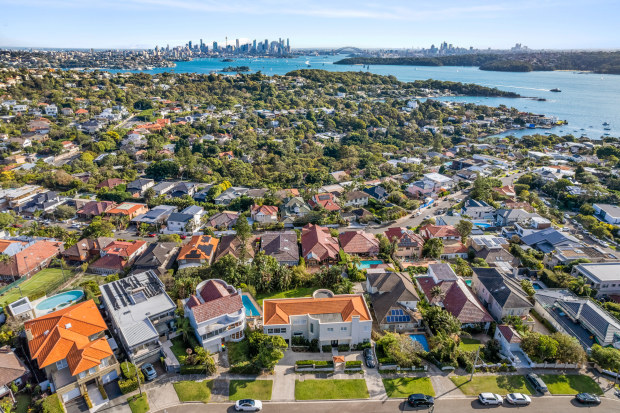Chanticleer

Near-record house prices can’t disguise a broken market
With house prices on pace to set new all-time highs, Australia’s affordability crisis is deepening. NAB chief executive Ross McEwan says a key solution will underpin urgent action.
The gap between Australia’s housing haves and have-nots is only growing starker.
New figures on house prices for the September quarter from Domain showed the national median house price is now within just $2000 of a new record. Adelaide and Perth are already at all-time highs and Domain’s chief of research and economics, Nicola Powell, says the national gauge will almost certainly eclipse that mark this year, even as price growth moderates.

Australia’s housing affordability crisis is deepening as home prices approach record levels.
The data came hot on the heels of a lunchtime session hosted by NAB chief executive Ross McEwan on Wednesday that rammed home the depth of Australia’s housing affordability crisis.
Chris Karagiannis, the CEO of Salvation Army Housing in Australia, revealed his waitlist for housing now includes a staggering 175,000 families. The Salvos are providing relief to someone every 17 seconds, such is the cost-of-living pressure in the community, as demonstrated by Wednesday’s hot inflation numbers.
While Reserve Bank governor Michele Bullock wouldn’t be drawn on Thursday about whether a rate rise was coming, she did tell a Senate estimates hearing she expects annual rent inflation to peak at a 34-year high of 10 per cent in the next six months. That’s a good indication of the multi-generational mess we’re dealing with here.
The surge in house prices and rents and the Salvos’ growing waitlist are two sides of the same coin. Surging immigration, soaring rents and weak supply are putting housing out of reach for too many Australians, even in the face of sharply higher interest rates.
McEwan’s frustration is palpable – he just doesn’t get how a wealthy nation like Australia finds itself in this problem. But these same issues are playing out across wealthy nations around the world, thanks to decades of poor policy and low interest rates. And solutions remain elusive.
The lunch, which brought together members of Melbourne’s philanthropic community and property community, did highlight some good ideas.
Mobilising private investors to develop more rental stock could be accelerated through rental subsidies and other incentives, although McEwan points out the tax burden on these investors is a disincentive.
Having capital providers view social and affordable housing as infrastructure rather than traditional property could help change funding models.
John McLeod, the co-founder of JBWere’s philanthropic services, suggested that changing the way we view subsidies for social and affordable could be important; he argues that these are effectively savings for the public purse, as getting a family in need into a house will reduce the burden on the health, justice and welfare system.
But for McEwan, most of these suggestions rely on fixing another key problem: a lack of housing supply.
“That is creating a major blockage in getting housing up and running. Because I don’t think there’s a lack of desire from developers and builders and funders,” he says. “We’re not keeping up and the traditional methods are just not working.”
Political battleground
McEwan says it is time for state governments to take over planning in a uniform way that reduces the time it takes to get a project up from three to six years to three to six months. This will reduce cost across the property system, making projects more economic and faster to bring to market.
“I’d be having state governments getting one way of doing planning approvals and speeding the hell out of that. That’d be the one thing, from talking to developers and builders, that will probably make the biggest difference. We can get people into housing quickly at a lower cost.”
This is not a new idea, of course, and getting local governments to take their hands off the planning tiller is likely to be painful. But what is changing, McEwan says, is the sensitivity of federal and state governments to the housing crisis.
“Now’s the time, because the government is very aware of what’s going on with housing. We’ve got people with ears wide open, wanting to find solutions for a big problem.”
With the housing affordability likely to worsen, it is not hard to see the crisis becoming Australia’s biggest political battleground ahead of the next federal election.
The Albanese government’s promise to build 1.2 million homes over the next five years reflects the government’s sensitivity.
But if that program hits the planning roadblocks that so frustrate McEwan, then calls for more action will grow.
Introducing your Newsfeed
Follow the topics, people and companies that matter to you.
Find out moreRead More
Latest In Residential
Fetching latest articles